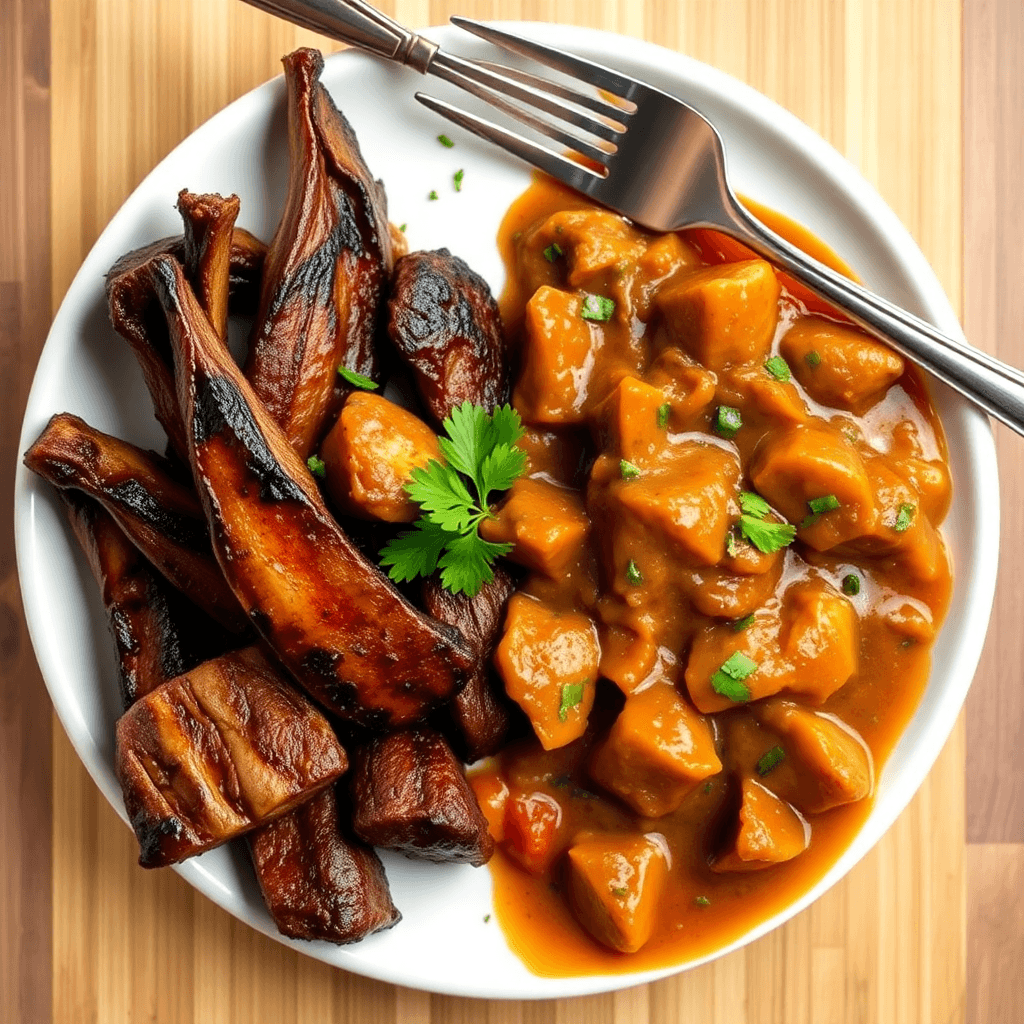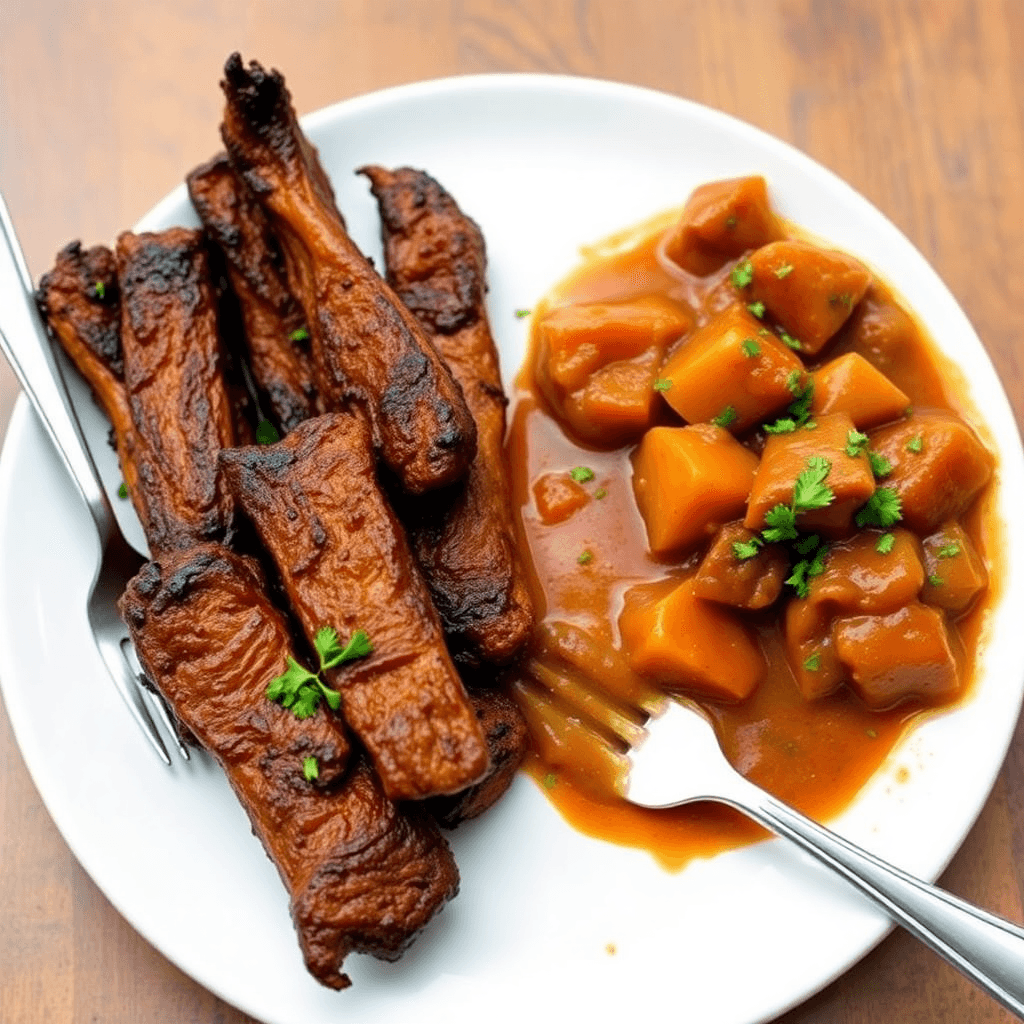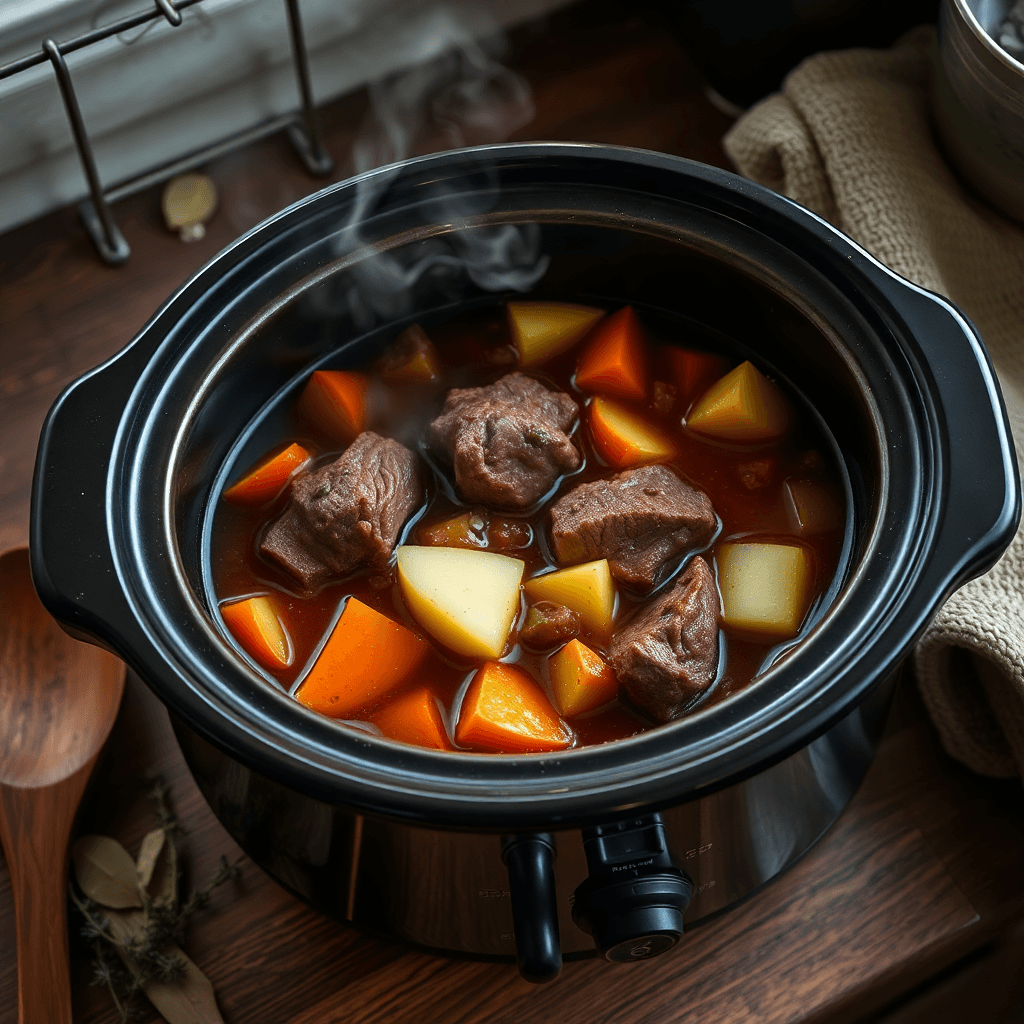Are beef tips the same as stew meat? This is a common question among home cooks when choosing beef cuts for recipes. While both are popular options, they differ significantly in texture, cooking methods, and cost. Understanding these differences ensures you use the right cut for your dish.
When browsing the meat aisle, you might stumble upon two popular terms: beef tips and stew meat. While both are cuts of beef, their differences significantly impact how you should use them in recipes. Understanding these distinctions will help you elevate your cooking game and make more informed choices at the butcher shop.
In this extensive guide, we’ll explore the origins, uses, cooking techniques, nutritional value, cost, and much more about beef tips and stew meat. By the end, you’ll be a pro at selecting and preparing the right cut for your dish.
What Are Beef Tips? Are Beef Tips the Same as Stew Meat?
Definition of Beef Tips
Are beef tips the same as stew meat? This is a common question among home cooks when choosing beef cuts for recipes
Beef tips refer to small, tender pieces of beef that are typically trimmed from premium cuts of the cow. These pieces are highly valued for their:
- Tenderness: Naturally soft texture that requires minimal cooking time.
- Flavor: Rich, beefy taste that pairs well with a variety of seasonings and sauces.
What Is Stew Meat? How Is It Different from Beef Tips?
Origin of Beef Tips
Beef tips are most commonly derived from:
- Sirloin: A versatile cut that balances flavor and tenderness.
- Tenderloin: The softest cut, often used for filet mignon.
- Ribeye: Known for its marbling and juiciness, making it perfect for beef tips.

How Beef Tips Are Sold
Beef tips are often sold in small, uniformly cut pieces. However, the source of the meat can vary depending on the butcher or supplier:
- Premium Beef Tips: Sourced exclusively from sirloin or tenderloin.
- Generic Beef Tips: May include trimmings from various cuts of beef, resulting in slightly varying textures and flavors.
What Is Stew Meat? How Is It Different from Beef Tips?
Definition of Stew Meat
Unlike beef tips, stew meat consists of tougher cuts of beef that are best suited for slow cooking. These cuts are typically taken from well-worked muscles of the cow, such as:
- Chuck roast: A popular choice for stewing due to its rich flavor and high fat content.
- Round roast: Leaner but still suitable for long cooking times.
- Brisket: Known for its robust flavor and ability to absorb seasonings.
Characteristics of Stew Meat
- Texture: Tough when raw but becomes melt-in-your-mouth tender when slow-cooked.
- Flavor: Intensely beefy, especially when combined with aromatic herbs, spices, and cooking liquids.

How Stew Meat Is Sold
Stew meat is usually pre-cut into cubes and sold in packages labeled specifically for stews. However, these cubes can come from different parts of the cow, resulting in slight variations in texture.
Key Differences Between Beef Tips and Stew Meat
Source of the Cuts
- Beef Tips: Premium cuts like sirloin, tenderloin, or ribeye.
- Stew Meat: Tougher cuts such as chuck, brisket, or round.
Texture
- Beef Tips: Naturally tender and suitable for quick cooking.
- Stew Meat: Requires long, slow cooking to break down connective tissues.
Cooking Methods
- Beef Tips: Grilling, sautéing, pan-searing, or broiling.
- Stew Meat: Braising, slow-cooking, or simmering in liquid.
Price
- Beef Tips: More expensive due to the premium cuts.
- Stew Meat: Budget-friendly and ideal for large-batch cooking.
Flavor Profile
- Beef Tips: Rich, juicy, and slightly sweet when caramelized.
- Stew Meat: Robust and hearty, with flavors enhanced by long cooking.
Nutritional Comparison
Both beef tips and stew meat are excellent sources of protein, iron, and zinc, but their nutritional profiles vary depending on the cut.
Beef Tips
- Lower in fat and calories, especially when derived from lean cuts like tenderloin or sirloin.
- High in protein, making them a great choice for muscle building and satiety.
Stew Meat
- Higher in fat, particularly when sourced from chuck or brisket.
- The additional fat content enhances flavor during cooking.

The Science of Tenderness
The differences in texture between beef tips and stew meat are primarily due to their location on the cow and their collagen content.
Beef Tips
- Derived from muscles that are less used, resulting in minimal connective tissue and a tender texture.
- Requires only a short cooking time to reach optimal tenderness.
Stew Meat
- Comes from well-exercised muscles that contain more collagen and connective tissue.
- Long, slow cooking breaks down the collagen into gelatin, creating a tender and flavorful result.
Cooking Techniques for Beef Tips
Quick Cooking Methods
- Grilling: Ideal for high-heat cooking, giving beef tips a smoky, caramelized crust.
- Pan-Searing: Creates a golden-brown crust while keeping the interior tender.
- Broiling: Perfect for achieving a charred exterior without overcooking.
Tips for Success
- Marinate for Flavor: Use a marinade with acidic ingredients like lemon juice or vinegar to enhance tenderness.
- Don’t Overcook: Remove beef tips from heat once they reach your desired doneness to prevent toughness.

Cooking Techniques for Stew Meat
Slow Cooking
- Ideal for turning tough cuts into tender, flavorful pieces.
Braising
- Searing stew meat before simmering in liquid enhances its flavor.
Simmering
- A gentle simmer allows the meat to absorb flavors from the broth or sauce.
Tips for Success
- Add Vegetables Strategically: Add sturdy vegetables like carrots and potatoes during the last hour of cooking to avoid mushiness.
- Use Aromatics: Ingredients like garlic, onion, and herbs elevate the flavor of stew meat.
Best Recipes for Beef Tips
Grilled Beef Tips with Garlic Butter
- Ingredients: Beef tips, garlic, butter, parsley.
- Cooking Method: Grill on high heat and top with garlic butter for a luxurious finish.
Beef Stroganoff
- Ingredients: Beef tips, mushrooms, sour cream, egg noodles.
- Cooking Method: Sauté beef tips, then simmer in a creamy mushroom sauce.
For more inspiration, visit the Tasty Joy Blog for creative beef recipes.
Best Recipes for Stew Meat
Classic Beef Stew
- Ingredients: Stew meat, potatoes, carrots, beef broth, tomato paste.
- Cooking Method: Brown the meat, then simmer with vegetables and broth until tender.
Braised Beef in Red Wine
- Ingredients: Stew meat, red wine, garlic, thyme.
- Cooking Method: Sear the meat, then braise in red wine for a rich and hearty dish.
Slow-Cooked Beef Curry
- Ingredients: Stew meat, coconut milk, curry spices.
- Cooking Method: Simmer stew meat with spices and coconut milk until tender.
FAQs About Beef Tips and Stew Meat
Can You Substitute Stew Meat for Beef Tips?
While stew meat can be used in some recipes, it is not ideal for dishes that require quick cooking due to its tough texture.
What Are Some Alternatives to Beef Tips and Stew Meat?
For a leaner option, consider chicken or pork. Vegetarian alternatives include jackfruit, tofu, or portobello mushrooms.
Cost and Budgeting
Beef Tips
- Price Range: $12–$20 per pound, depending on the cut.
Stew Meat
- Price Range: $6–$10 per pound, making it an economical choice for large meals.
Beef Stew Meat vs. Beef Tips: Key Differences and Substitutions Explained
When it comes to cooking hearty beef dishes, terms like “beef stew meat” and “beef tips” can be confusing. Though they may sound similar, these two ingredients differ in several ways, from the cuts of meat used to how they’re prepared. In this article, we’ll dive deep into the distinctions and answer related questions to help you make the best choices for your recipes.
What Is the Difference Between Beef Stew Meat and Beef Tips?
The primary difference between beef stew meat and beef tips lies in the type of beef used and their intended culinary purpose. Let’s break it down:
Beef Stew Meat
- Cut: Stew meat usually consists of tougher, less expensive cuts like chuck, round, or brisket. These cuts benefit from slow cooking, which breaks down their connective tissues to achieve tenderness.
- Preparation: It’s commonly cubed and used in dishes that require long, slow cooking methods, such as stews or braised dishes.
- Texture and Flavor: Stew meat becomes fork-tender and develops deep, savory flavors over time, making it perfect for comfort food recipes.
Beef Tips
- Cut: Beef tips are often sourced from more tender parts of the cow, such as the tenderloin or sirloin. However, some recipes also use trimmings from larger cuts, particularly for budget-friendly options.
- Preparation: Beef tips are versatile and can be cooked quickly using methods like sautéing or grilling. They’re often featured in dishes with sauces or served over rice or noodles.
- Texture and Flavor: Beef tips are typically more tender and can deliver a melt-in-your-mouth experience, especially when sourced from high-quality cuts.
In essence, stew meat is tougher and meant for slow cooking, while beef tips are more tender and suited for quicker preparations. To learn more about different beef cuts and their cooking methods, visit the Beef Cuts Guide by Beef. It’s What’s For Dinner.
Can You Substitute Stew Meat for Beef Tips?
Yes, you can substitute stew meat for beef tips in some recipes, but there are important factors to consider. Here’s what to keep in mind:
Cooking Method Matters
- If the Recipe Calls for Quick Cooking: Substituting stew meat in recipes designed for beef tips might not yield the desired results because stew meat requires more time to tenderize. Without sufficient cooking time, the meat may turn out tough and chewy.
- If the Recipe Allows for Long Cooking: On the other hand, stew meat can work as a substitute if the dish involves slow cooking, such as in a slow-cooker or pressure-cooker beef tips recipe.
Adjustments for Flavor and Texture
- Marinate Stew Meat: If you’re using stew meat as a substitute, consider marinating it beforehand to enhance its flavor and tenderness.
- Cook Slowly: Opt for a longer cooking time, even if the recipe doesn’t explicitly require it, to allow the stew meat to reach a tender consistency.
While stew meat can work in place of beef tips with the right adjustments, the reverse isn’t always true. For more information on substituting cuts of beef, check out this guide on beef substitutions by The Kitchen.
What Is Another Name for Beef Tips?
Beef tips might be referred to by other names depending on the recipe, region, or culinary tradition. Here are some alternative terms you might encounter:
- Steak Tips: This term is often used interchangeably with beef tips, particularly when the meat comes from tender cuts like sirloin.
- Beef Tenderloin Tips: When the meat originates from the tenderloin, it might be marketed as tenderloin tips.
- Sirloin Tips: In cases where the tips are specifically from the sirloin cut, this name is commonly used.
- Beef Trimmings: For budget-friendly options, beef tips may come from trimmed sections of larger cuts like roasts, which may be labeled simply as “trimmings.”
To explore more about these terminologies and their uses, visit Serious Eats’ Guide to Beef Cuts.
What Cut of Meat Is Used for Beef Tips?
The cut of meat used for beef tips can vary widely, depending on the dish and budget. Here’s a closer look at common sources:
Tenderloin
- Known for its exceptional tenderness, beef tips from the tenderloin are often pricier but provide a premium eating experience.
Sirloin
- Sirloin tips strike a balance between tenderness and flavor. They are a popular choice for dishes like steak tips in gravy or sautéed beef tips.
Ribeye or Strip Steak Trimmings
- Trimmings from high-quality cuts like ribeye or strip steak may also be used, offering excellent marbling and a rich taste.
Chuck or Round (For Budget Options)
- In more economical options, beef tips might be sourced from trimmings of tougher cuts like chuck or round. While these may require more careful preparation to achieve tenderness, they can still deliver satisfying results in stews or casseroles.
Understanding the cut of meat used for beef tips can help you choose the right product for your recipe and budget, ensuring a delicious outcome every time.
Conclusion: Beef Stew Meat vs. Beef Tips
While beef stew meat and beef tips share similarities, they serve different culinary purposes due to their distinct cuts and preparation methods. Understanding these differences can help you confidently choose the right ingredient for your dish. Whether you’re simmering a hearty stew or sautéing tender beef tips in gravy, knowing how to work with each type of meat ensures flavorful, satisfying results.
Experiment with both to discover their unique qualities, and enjoy the rich, savory flavors they bring to your table! For additional cooking tips and recipes, visit the Food Network’s Beef Recipes.
Explore recipes like Slow Cooker Beef Tips and Gravy and experiment with different techniques to discover your favorite ways to use these versatile ingredients.

